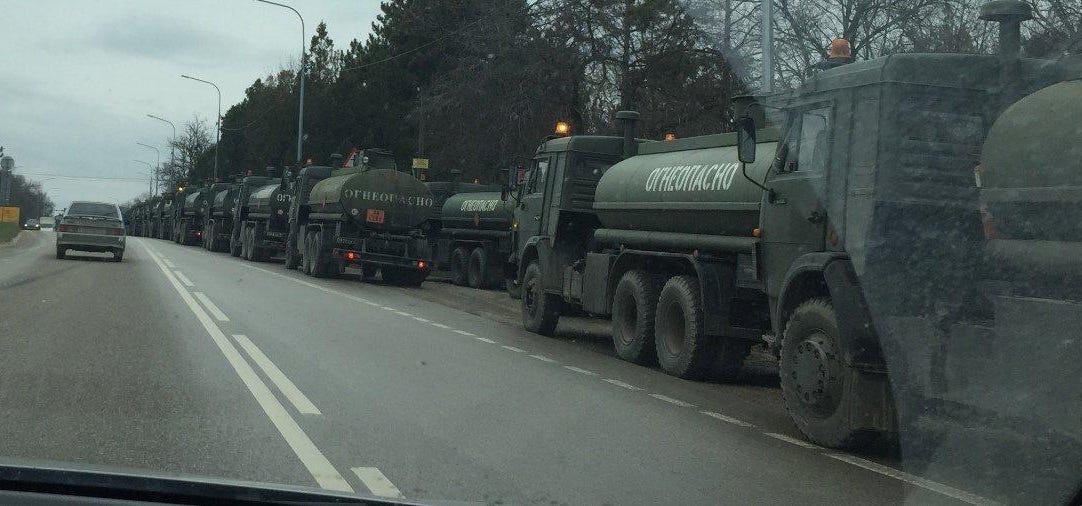The complete idiot's guide to military logistics
It's the boring stuff, the Russians are learning, that kills you in the end.
Russia’s intended campaign — an assault strike predicated on speed and Ukrainian political weakness — has tipped into a joint combat operation requiring logistical and communications planning that does not seem to have been in place, say analysts.
—Sam Jones, John Paul Rathbone, and Dmitri Sevastopulo, Financial Times, March 12.
When I was a military correspondent, here is how I would explain the importance of logistics in military operations. This will help you understand the problems the Russian army is encountering in Ukraine.
Say you and your family want to visit Granma back in Indiana, about 500 miles away. You and your partner throw the kids, the dog and some clothes in the minivan, and you’re ready to go.
But wait: There is no food available on your route. So you go back inside and pack up a couple of days of meals, squeeze it into the back. And you feel ready.
Also, there are no gas stations on the way. You don’t feel comfortable carrying gas cans in the car, so you get your pick up truck, and fill up some cans, and put them in the back. You can drive that while your partner drives the minivan.
But also there are no dependable sources of potable water. So you put 200 gallons into cans and lift them into the back of the pick up.
Also, there are no doctors or hospitals. So you persuade some medical people you know to come along in their own car. But they also need food and water and gas, and space for their bandages and medicines and equipment, so they bring two pickups with them, loaded up.
Now we have a convoy of five vehicles. Ready to go? Not quite. There also is reliable information that you could be attacked along the way. So you get five truckloads of soldiers—two for the front, two for the back, and one to control and command their operations.
But wait. This security force also needs food, fuel, and water. So that’s another five truckloads right there. Plus, they need ammunition and back up gear. And batteries for all their radios. Add another truck.
When they show up, the medical people roll their eyes and say that with all these additional people, they’re gonna need another truckload of supplies.
Finally, you have the convoy ready. You roll out and get about a mile. A truck gets a flat! Guess what: There are no automotive repair shops on your route either. So you round up a team of mechanics. They have their own truck, plus three for food and water. And two for fuel. And two truckloads more for spare tires, engine oil, filters, and tools.
And finally, your convoy, now consisting of 25 vehicles, is on the road. But you need to avoid the main roads, which might be mined, or have ambushes waiting. So you take to the back country, even to dirt roads. That way is safer, but it also is mighty slow. In two days you make just 63 miles, and then begin to run low on food and fuel. So you hunker down and do some new calculations on how many more truckloads of those you might need.
Now you are thinking like a military logistician.






And as I read this, I realize I forgot about combat engineers--who can be essential in removing mines, filling in trenches, making holes in barbed wire barriers, etc. Add another half dozen trucks for them.
I'd also want to be flying drones ahead of the convoy to look for obstacles and ambushes